This was published 9 years ago
Hastings, England: Seaside resort a gourmet haven
The historic town of Hastings has reinvented itself as a gourmet haven for busy Londoners.
By Keith Austin
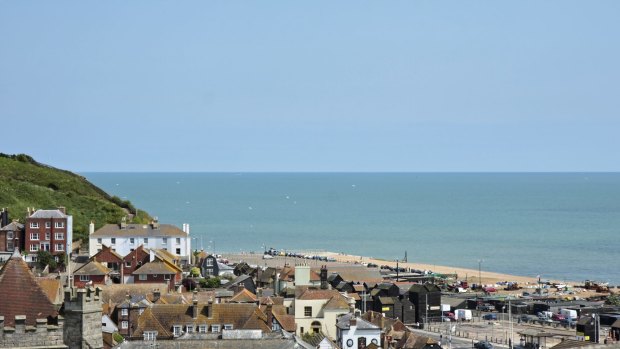
Historic town: Hastings on the south coast of England.
Some 948 years ago, William of Normandy crossed the English Channel, landed at Pevensey and quickly knocked up a wooden fort on a rocky outcrop just along the coast.
In doing so, he changed the course of English history – the fort had been prefabricated in France and reassembled on site, making Hastings one of the first places in Britain to use flat-pack furniture.
This little-known fact is missing from the local literature – an egregious oversight if you ask me – but there's still plenty to fill the void in a seaside resort becoming increasingly popular as a day out from London.
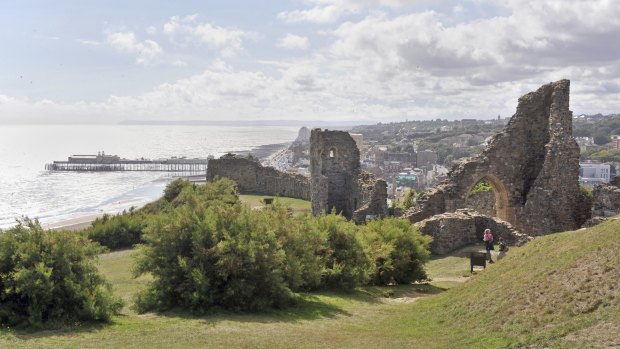
The ruins of Hastings Castle.
Just a two-hour train ride from the city, Hastings has in recent years taken over from Brighton as the go-to bolt hole for creative types escaping the rat race. It also helps that the popular TV series Foyle's War was filmed in the attractive Old Town.
But rarely has the old adage about not judging a book by its cover been more appropriate than when stepping off the train into the desolation of Station Approach Road and the surrounding streets.
You will be tempted to get back on the train. Instead, follow your nose to the pebble beach and turn east along the seafront, ignoring the charcoal ruin of the pier that burnt down in 2010, past the faded Regency wedding cake of Pelham Crescent, past the ubiquitous fish-and-chip shops and penny arcades with their tinny tinkle and hypnotic coin-drop machines. Here are the car parks, the go-karts and the boozed-up Londoners quaffing pints and turning lobster red in the sun.
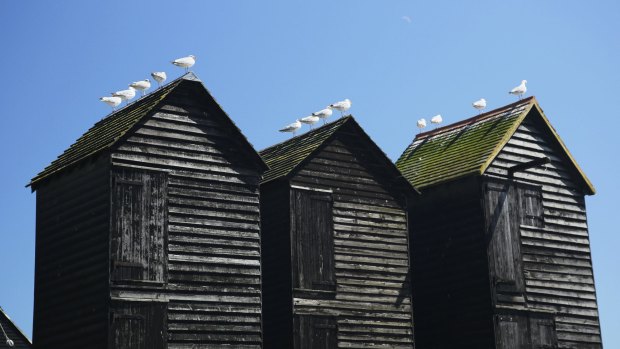
Fishermen's storage sheds.
Keep an eye out for George Street, just opposite the end of Hastings Adventure and Crazy Golf – a complex of three 18-hole courses that is also the National Centre for Miniature Golf in Britain and home of the annual World Crazy Golf Championships.
George Street is narrow and lined with arts and crafts shops, antique stores, pubs, restaurants, bars and bookshops. This is where the pretty Old Town begins and where the quotidian turns quaint, but not in a bad way.
It is to here that we return in evening for dinner at the Boulevard Bookshop and Thai Cafe, where we tuck in under the watchful eye of titles such as Foodwatch, Brainfood and 7lbs in 7 days. The bathroom, I am told upon inquiring, is around the corner between philosophy and poetry. (Well, I was only going for a P.)
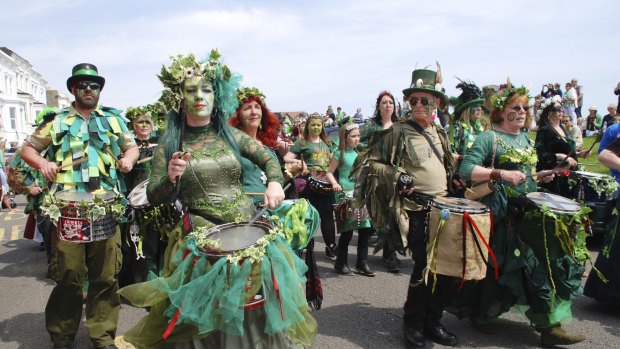
Morris dancing during the Jack on the Green festival.
Winding streets, footpaths and alleyways – the "twittens" – incline gently upwards and are lined with B&Bs, one-off shops selling everything from distressed furniture to happy Buddhas. Here you will find the beautiful blue of Cafe Maroc, the Old Town Hall Museum, the Electric Palace Cinema and appealing pubs such as The Stag Inn, which boasts of being Hastings' oldest pub (circa 1547).
Opposite the Stag and hanging out slightly over the pavement is a wonderful old timbered house owned and restored to full Tudor glory by Alastair Hendy, an entrepreneur who has almost single-handedly made Hastings cool again with his hardware store-cum-restaurant at 36 High Street.
The AG Hendy & Co HOme Store and Kitchen is full of vintage-style stuff you never knew you didn't need (bottle brushes, red enamel teapots, feather dusters), for prices you cannot afford, in an old building also painstakingly restored by Hendy, a food writer, photographer and stylist.
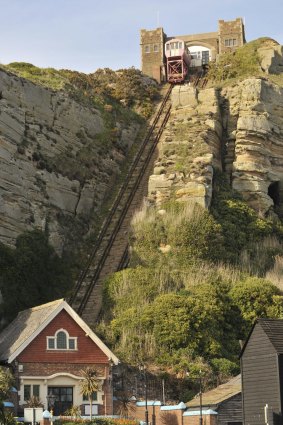
The East Hill Cliff funicular railway.
He is also a dab hand as a cook – and that is him out the back, chopping away in the kitchen, when we take our seats inside at the rear of the store.
Such is the attention to detail in the place that everywhere one turns, every corner and nook and cranny, upstairs, downstairs, seems perfectly posed, ready for its close-up. Over here is an apricot tart lit so artfully that it begs to be photographed; ditto a stack of local fish and crabs atop ice in an old tin bucket.
The food isn't cheap, but it is simple, delicious and startlingly fresh. We work out way through asparagus and brown shrimp, crispy pig cheeks with croutons and radicchio, and finish off with the house specialty of a seafood pot of crab, mullet, mussels, fennel and samphire - all in broth that demands bread dipping and plate licking.
Back out on the streets, we wobble our way towards the seafront, where sits the black-tiled square of the Jerwood Gallery, which opened in 2012. Beyond this is the Stade, the shingle beach that is home to Europe's largest fleet of beach-launched fishing boats.
For 1000 years, they say, fishermen have gone to sea from this beach - a tradition that continues to this day, with the boats hauled back up the beach by pulleys and left sitting upright on the shingle. Behind these, past the miniature railway, are the historic black fishermen's huts. Tall, tarred and weatherboarded, the huts were built to store nets and other fishing gear.
From here, the East Hill Cliff funicular railway takes you up to Hastings Country Park, where a cherry-red ice-cream van does a brisk trade in 99 Flakes. The arresting view takes in the higgledy-piggledy of the Old Town, the remains of Hastings Castle (reached by a companion funicular, the West Hill Cliff Railway) and the great sweep of the coast westwards.
You can see why William wanted it.
The writer travelled at his own expense.
TRIP NOTES
MORE INFORMATION
visit 1066country.com.
GETTING THERE
Trains leave London's Victoria and Charing Cross stations for Hastings every half an hour or so. Weekend return adult tickets costs from £31 (about $57). For trains and times see nationalrail.co.uk.
SEE + DO
The Fishermen's Museum features the last Hastings sailing lugger, the 10-metre long Enterprise. Full of memorabilia and information about the history of fishing in the town. Free. See ohps.org.uk/fishermens_museum for more details.
The Jerwood Gallery, next to the Stade, is the home of 20th and 21st-century British art. It has a bookshop and cafe. Adult entry is £8 (about $15). See jerwoodgallery.org.
The Shipwreck Museum is a fascinating look at the history of - and artefacts from - the many shipwrecks in the area. See shipwreckmuseum.co.uk for more.
Hastings is becoming famous for its many festivals, including the Jack in the Green Festival of Morris Dancing over the May Day weekend, the Seafood and Wine Festival in autumn and the Herring Fair at the start of November.
Sign up for the Traveller Deals newsletter
Get exclusive travel deals delivered straight to your inbox. Sign up now.